Located in the very northern region of Vietnam, 350 kilometers away from Hanoi, Sapa features the most spectacular sights and the most colorful cultures of the country. Surrounded by the magnificent Hoang Lien Son range, 5,500 feet above sea level, you will literally walk in the clouds when visiting this hill station. And there is also the Fansipan Peak, a 10,000-foot giant, for you to conquer. You can check out this article to fully emerge in the scenic beauty of Sapa and craft your unforgettable experience there.
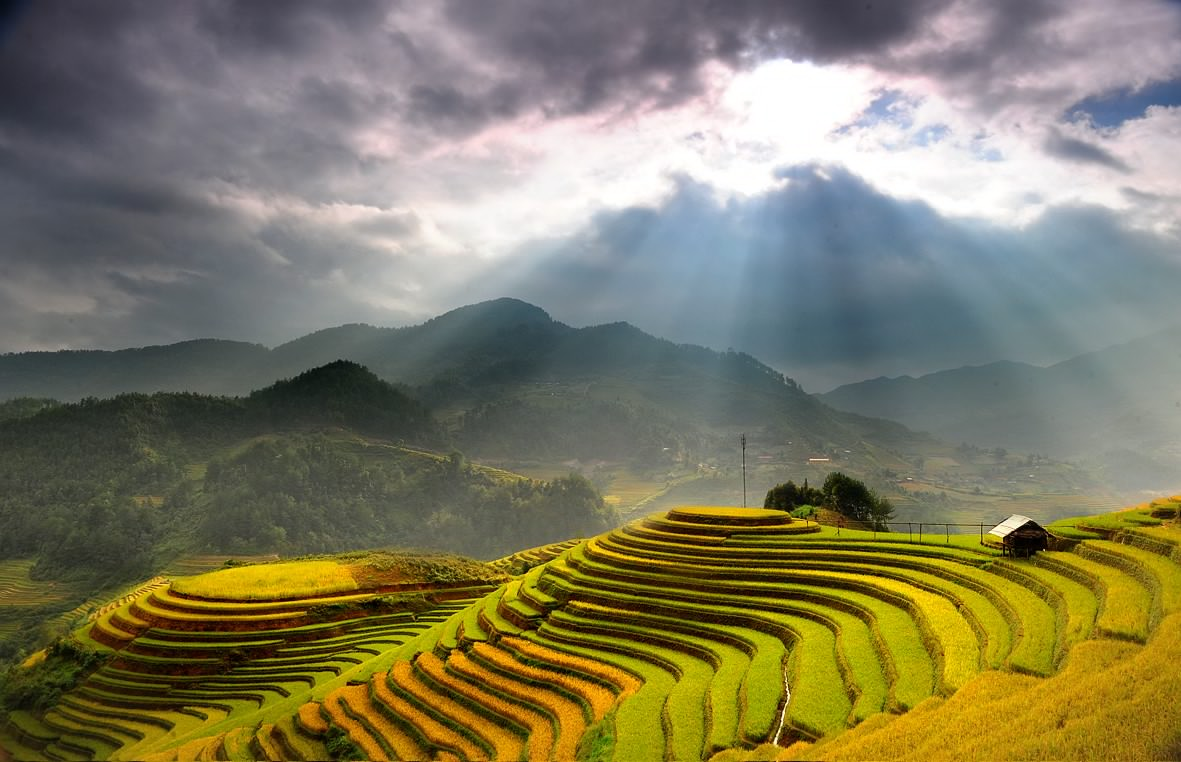
Once again, Sapa is truly famous for its landscapes of rice terraces, blooming hills, a cloud-piercing peak, and trails in lush valleys. There have been endless articles boasting about its beauty, but the fantastic people of Sapa have are still a mystery. Your traveling experience may not be whole if you only see the stunning landscapes without the smiles and vivid textiles of the locals.
Sapa is home to five ethnic minorities of Vietnam: H’mong (internationally known as Miao), Red Dao (Yao), Tay or Choang (Zhuang), Giay, and Phu La (Yi). Many of these people share the same traits with their brothers and sisters living in southern China. Each person has a fantastic history and magical culture that will surely attract your curiosity. And I am here to do the homework for you. But before that, you should have a look at this article to be able to recognize one person from another through their distinctive clothes. Since the rich history and culture is so abundant, I will split this topic into two parts, the first one covering the H’mong and the Red Yao, and the second one dedicated to the three remaining ethnicities. Stay tuned!
Contents
H’mong – The People of Sophisticated History and Culture
The H’mong people, officially recorded in international books as the Miao people, are among one of the major ethnic minorities of Vietnam and China, with a population of eight million worldwide and one million in Vietnam. The H’Mong hunt and collect forest herbs and fruits and are less focused on agriculture and field work.
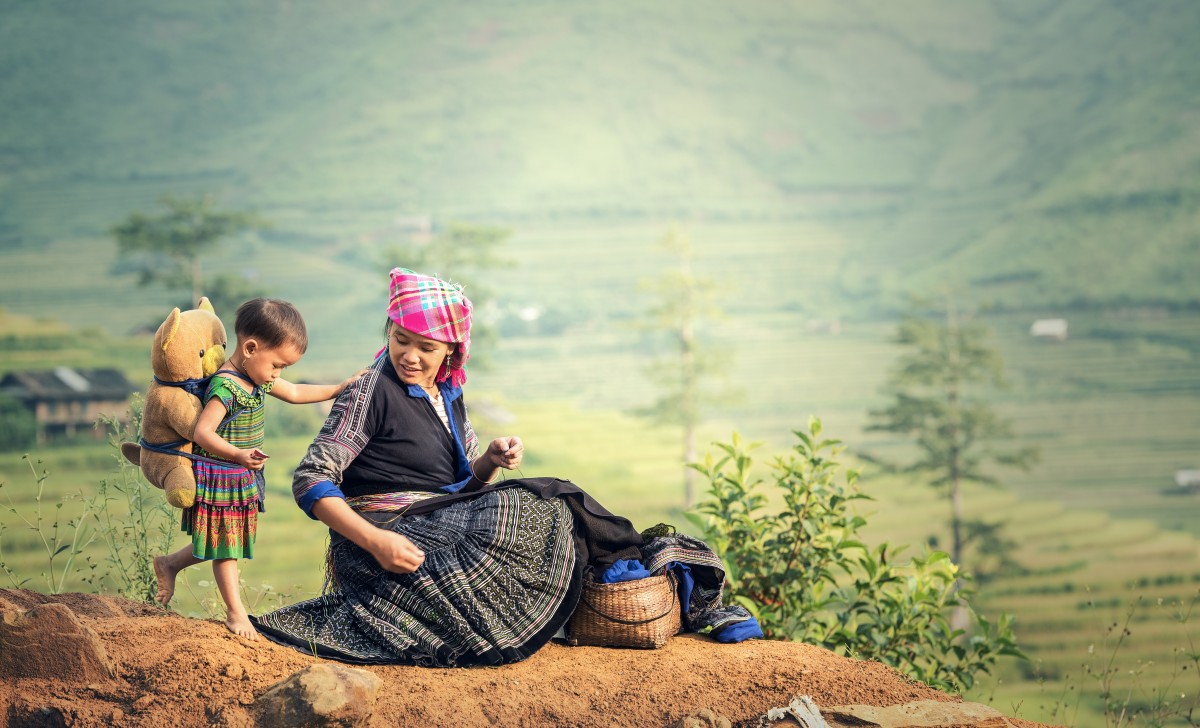
H’mong People in Sapa – Photo: PxhereOriginally known as the Miao people as a whole, this group of people interestingly has different names. “Miao” (Chinese) is commonly refers to those living in China, and Miao people that live anywhere else prefer to call themselves “H’mong” (in their language). In Chinese, “Miao” means seedling, a young plant rising from the earth. It beautifully depicts how closely this ethnicity lives to mother nature. But, “Miao” also sounds like “cat” in other Asian languages, contributing to many misunderstandings throughout the course of history.
A while ago, people from other countries (including the Cantonese people) tended to think of this group as a barbarian tribe living like wild cats in the mountains. Therefore, it has become an insult to use this term to refer to H’mong living outside of China. Please be careful not to call a H’mong person “Miao” anywhere else in the world, except in China.
Now, let us dive into more details: the might, the magic, and the romance of H’mong history and culture.
From the Mighty History of Fire and Drums to the Declining Migration
Legends and burial customs have revealed the originality of the H’mong (or Miao people). Legends say that the Miao were a hunting tribe, originally from a northern area with six months of darkness and six months of light in Europe. Traces show that they moved to Siberia after the Ice Age before migrating to the south of China.
In addition, historians state that the original H’mong people were closely related to Caucasians, with light skin, silver or red hair, and even blue eyes. Long ago, Chinese authorities classified H’mong people into two groups: Domestic Miao and Wild Miao. Domestic Miao were those who lived and bred together with the Chinese people, therefore their original appearance was genetically saturated.
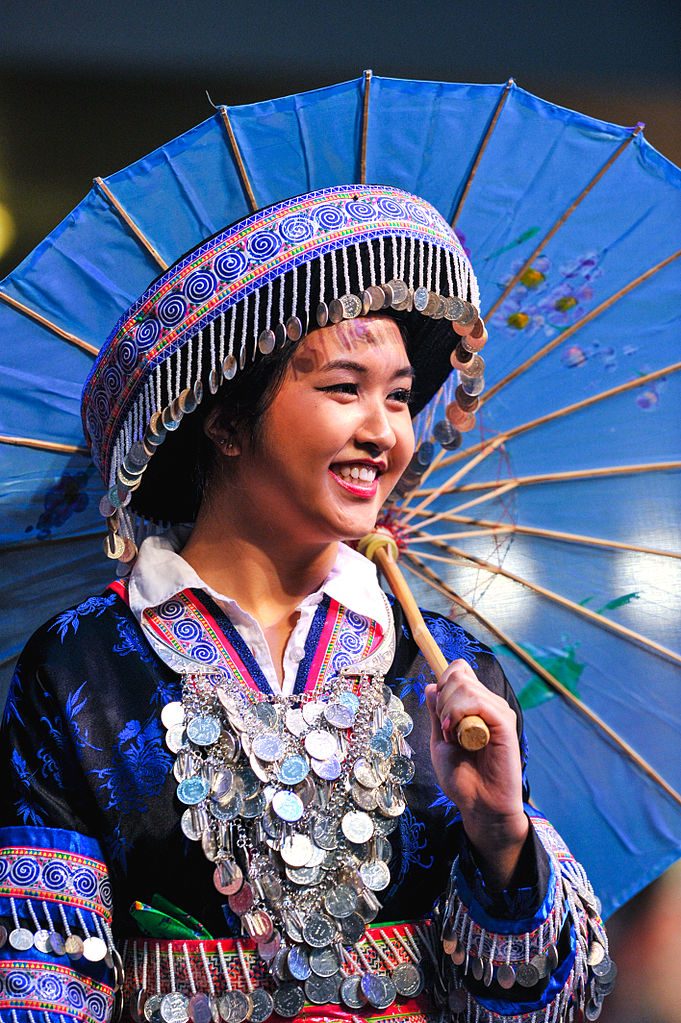
The Wild Miao on the other hand were suppressed and pushed to live in the wild mountains. They were gradually terminated for their bravery, because they stood up and fought for their freedom for thousands of years. In the 17th century, missionaries from Europe came into contact with them in Sichuan for the first time and were dazed by the Wild Miao’s Caucasian-like appearance. Even the rituals of the H’mong burial nowadays are about guiding the spirit of the dead to their ancestors, to a northern land of snow and darkness.
Through the course of history, the Miao were considered as the very first invaders of China and there have been a lot of wars and massacres between the Chinese and the Miao from the first Chinese empire to the last dynasty of Qing. Even in the eighth century, the Miao joined the alliance of five other ethnicities and founded their own country. They struck fear in the enemy’s hearts with their furious warriors wearing silver armor and buffalo-horned helmets, followed by mighty drum beats. Fire and blood covered their trails as the army of the H’mong roamed the battlefield. They invaded many surrounding countries, made their way south and started to inhabit new lands. This marked their first appearance in Vietnam and many other southeastern Asian countries.
But the mighty country did not stand for long before becoming suppressed by the Chinese again. For a thousand years more, up until the end of the 19th century, the Chinese forced the Miao to migrate to the high mountains and stay away from civilization.
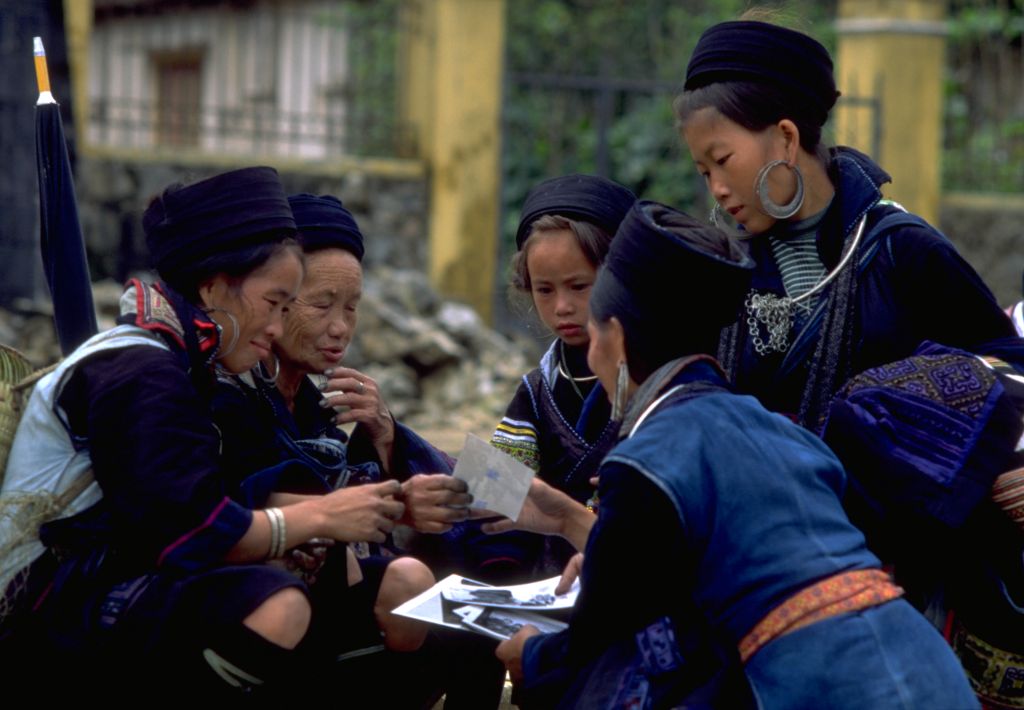
In the modern history of the 20th century, the H’mong have contributed a lot to the liberation of the Vietnamese against the French and the Americans, and later became part of the 54 ethnic brothers and sisters living on the country of Vietnam.
Traditions and Customs of the H’mong People in Sapa
H’mong Hospitality
The H’mong are the people of etiquette and hospitality, they pay great attention to treating their visiting guests extremely warmly and well. If you have the chance to enter a H’mong home, they will try their best to provide you the best experience. Usually they will butcher one of their livestock to make a feast to treat you, for example a chicken made into a whole range of dishes.
There are two things that you must note when attending a H’mong feast: the chicken (or duck) ritual, and do not overeat. The chicken ritual shares many similar characteristics with how to share a chicken with a northern Vietnamese family. The chicken head is for the eldest, and the legs are for the kids. But there is one difference: the chicken’s heart. In a H’mong treat, the chicken heart is shared between the host and the guest, followed with a toast with a local alcoholic drink. This act pays respect and shows hospitality to guests, but worry not, you can refuse, and they will not look down on you. Also you must eat at a good pace, because over-eating is considered a serious insult in H’mong culture.
H’mong Marriage
The H’mong have one of the most ridiculous marriage customs of the world. Back in the day, a H’mong woman had no right to choose her own partner because of a ritual called “Wife-Snatching”.
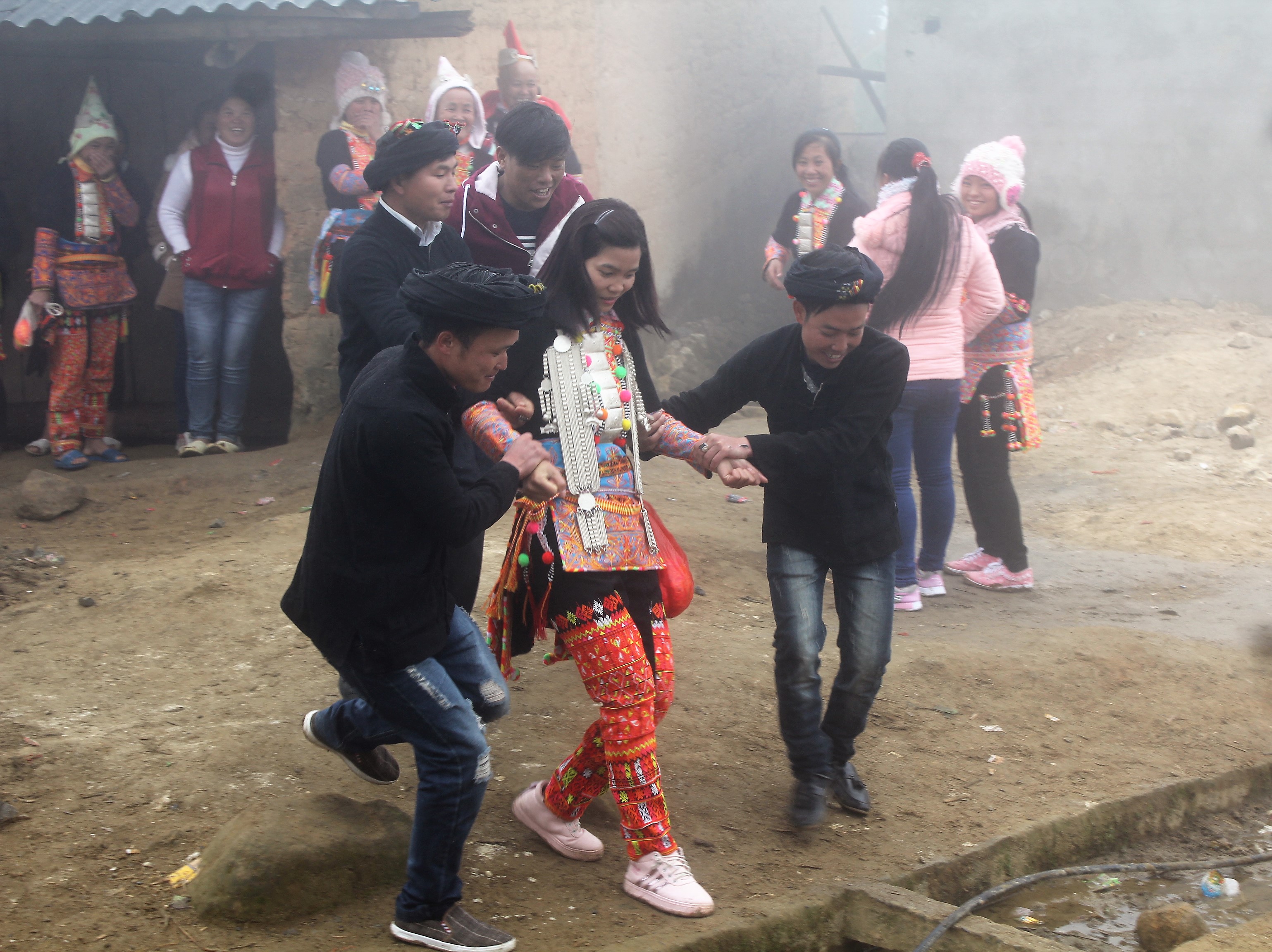
The marriage season takes place in the springtime, right after the H’mong New Year. A man who wants to marry must find a way to snatch his prospective wife to his home, without being caught by her parents. The man’s parents will then butcher a chicken and make a charm to offer to the H’mong ancestors, forming an unbreakable and undeniable vow between the couple. After three days, both the man and the woman return to the bride’s home, bringing offerings of jewelry, food and money to complete the ritual.
The bride’s parents have no way to reject the marriage, according to the H’mong norms. The man has to stay at the woman’s home for one night before both of them can settle down in their new home. The wedding must occur, but it is not necessary until the newlywed family has enough money to support the wedding expenses. The couple can have a child before the wedding.
As crude as it sounds, this ritual eliminates the wish of the girl to marry the one she loves. This means a random guy can show up during the night and snatch her away, and there is nothing she or her family can do. The government has put a lot of effort into changing the ritual while still maintaining its uniqueness. Nowadays, the H’mong marriage has adopted Viet customs, where it takes more time for a couple to get to know each other, and the girl can choose to marry anyone she wants to. Then, the customs either proceed as they would in a normal Viet wedding, or the couple can plan a snatch with the approval of both families.
H’mong New Year
The H’mong people celebrate their own New Year festival, according to their own calendar. It usually falls during the eleventh month of the Lunar calendar (late January) and lasts for 15 days. This is the most important festival of the year for them, symbolizing the start of something new and good harvest for the coming year. However, it does not have an exact date. The date of New Year’s Day is only revealed two months prior to the celebration, and the festival is organized rather subtly. They join with the Vietnamese New Year months later, when all the ethnicities also celebrate together.

Nevertheless, this is still a major festival. Visitors who are visiting Sapa during this time can enjoy various traditional musical shows that embody H’mong customs. Women and girls dress up in traditional costumes, wearing silver necklaces and diadems (not to mention, the H’mong are the masters of silver craft). You can take pictures with people in costume and get to know the different stories behind every symbol. You will learn a lot because they actually speak English and French really well!
Other festive attractions also include horse racing and bull fighting, and you can have a taste of the best H’mong wine and smoked bacon of the year. This is also the time of the year when people from many villages gather together and share their memories of the last year. So, you should look forward and plan your trip to Sapa during this interesting holiday of the H’mong.
Red Dao – The People of Agriculture and Musical Romance
The Red Dao people belong to the family of the Dao ethnic group, officially called Yao worldwide. The Yao ethnicity is the second biggest ethnic minority in Vietnam with a population of 750,000 people, just behind the H’mong. They are well known in the Sapa area for their terraced fields, big markets (including the “love” market), and romantic love songs that echo over the mountains. There are a lot of love stories about the Red Dao couples crossing many mountains, rivers, and forests to be together.
Read more: How To Get From Hanoi To Sapa On Your Own
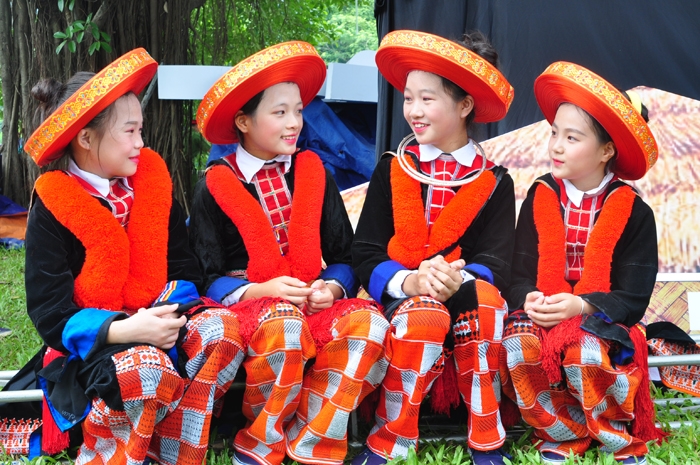
Compared to the H’mong, the history of the Red Dao people is less significant, but they have played a major role in aiding the H’mong through the course of time. They arrived and settled down in Vietnam together with the H’mong during the suppression of the Imperial Chinese government hundreds of years ago.
Legends say that the Dao people were mountain jackals transformed into humans, and the word Dao (Yao) in Chinese also means “jackal”. Their god is a jackal named “Ban Ho” with rainbow fur, which was promoted to the rank of general by the Heaven Emperor. The people are also more used to livinh in high mountains rather than down in the plains. Legends also describe them as people with cheeky smiles and innocent looks, but really smart and talented in every field, from agriculture to blacksmithing and art.
Despite having a shallow recorded history, their culture is considered as one of the most colorful and unique amongst the ethnicities in Sapa. They also share hospitality traits with the H’mong, treating their guests royally with their own cattle for a communal feast. You can have a look at how the Red Dao treated our beloved friend Sonny Side with seven dishes of pork in this video. But now let’s have a look at more unique cultural spotlights of the Red Dao.
Traditions and Customs of the Red Dao People in Sapa
Red Dao’s Maturity Test for Men
The Dao culture favors men over women like in the old times, therefore, the man of the family has to prove himself to be capable. The maturity test takes place during the last months of the Lunar calendar and is held to evaluate the maturity of a man. Those who fail the test despite being old are considered childish, and those young men who complete with flying colors will be regarded as mature men.
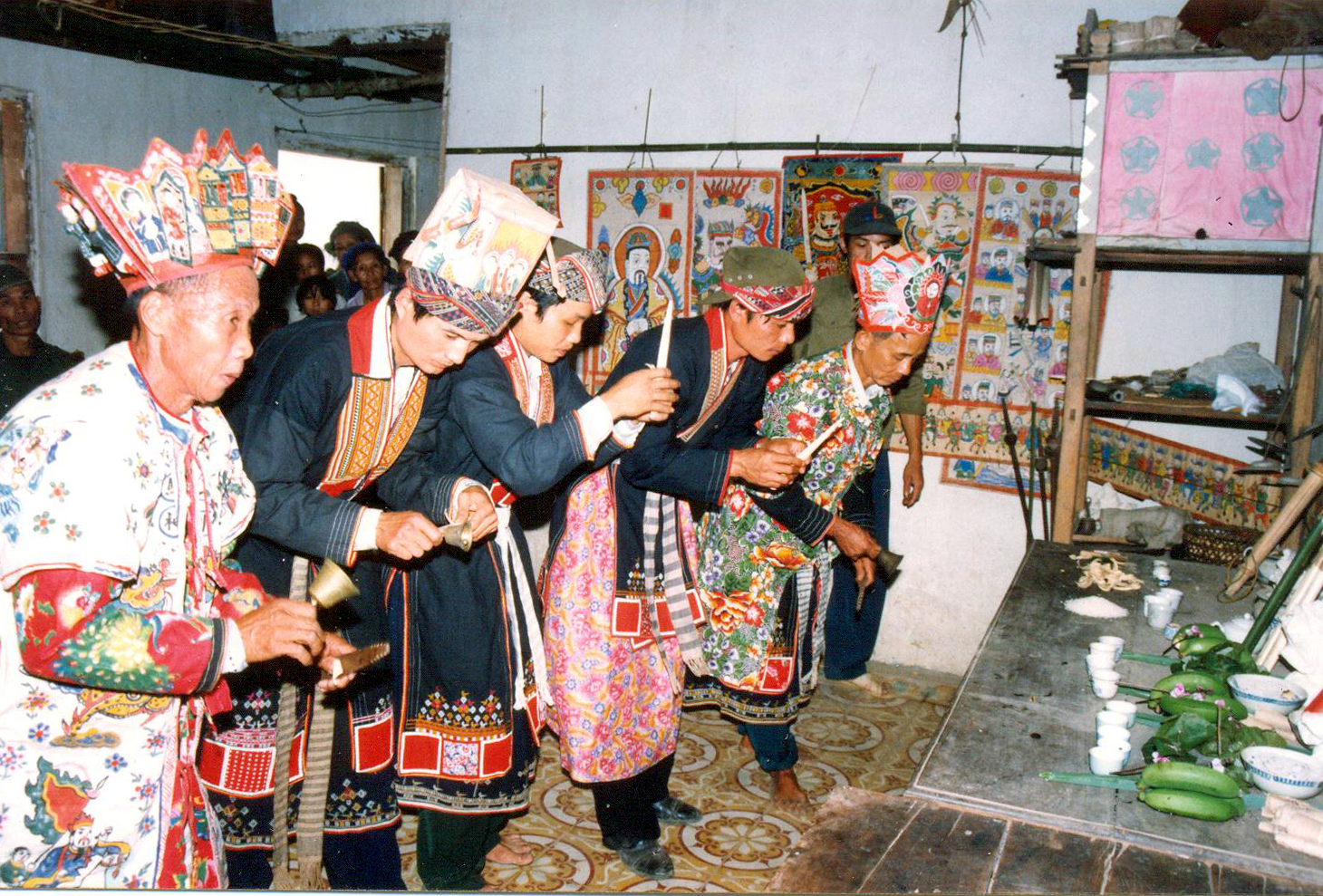
There are no risky challenges in the test, it is more educational in purpose, reminding the men of their ancestors, karma, and not to do bad things. There is no age limit for taking the test, and upon completion, the participants will be receive new names. This is also a major event in the Red Dao’s belief, and they will usually hold big parties with local specialties and wines to celebrate the new matured men within the community.
Red Dao’s New Year
Unlike the festive H’mong New Year celebration, the Red Dao New Year centers on religious purposes. The Red Dao also celebrate on the same dates as the Vietnamese Lunar New Year.
On the 27th and 28th of the last month of a Lunar Year, a Red Dao family will start to cook offerings for their ancestors and gods. On New Year’s Eve, the man of the family must not stay home, but rather gather with other men on the tallest peak nearby to enact the offering ritual. There will be a charm master creating charms on the men, shooing away the ghosts and bad spirits, and blessing them with good luck for the next year.
One of the most important parts of the New Year Celebration is the Fire Dancing Ritual, only those over 18 are able to take part. The man and the woman of the house will have to clean themselves thoroughly and wear new clothes. Then they sit opposite to each other, with a bonfire in between and watch the charm master execute the rituals. After the fire settles, and a pile of red blazing charcoal smolders, they will jump in and dance together with their bare feet. The dance serves as an offering to the Fire God, in hopes for a happy life and good health for the coming year.
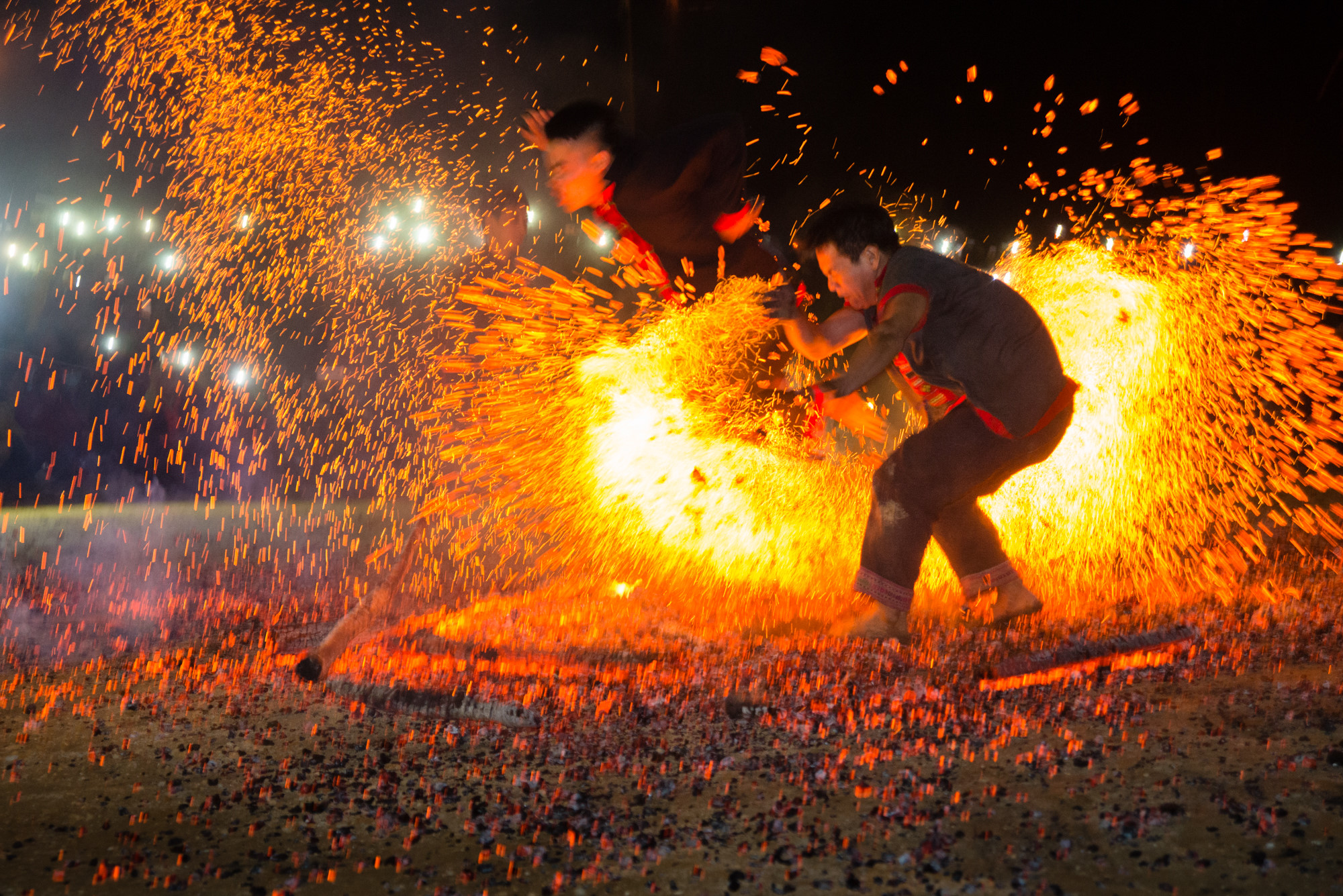
Red Dao’s Love Chasing Custom
Unlike the H’mong people, the Red Dao marriage is based on true love between the man and the woman. They spread the love throughout their songs and melodies. There is also a Love Market in Sapa where Dao boys and girls meet and date, choosing the right partner for their marriages. The love season occurs during the spring time also, after the New Year celebration.
Come to Sapa during this time, and you will be be able to hear with beautiful love songs and melodies that echo across the mountains by the Red Dao lovebirds. This custom is part of a bigger culture they refer to as “Pao Dung singing”, where the Red Dao people put their stories, love, and hope into their songs to filter across the valleys.
While a H’mong man has to snatch his wife out of her parent’s home, a Red Dao man “rescues” her. The Red Dao people live in stilt houses, high above the ground. In order to marry a girl, a Red Dao man has to figure out, by himself, how to take her down to the ground, without using the stairs of her house. This can mean either building his own stairs, or asking for help to form a human tower. The girl meanwhile will sing and tell her stories to encourage her man. Further on, the wedding takes place and shares similar traits to the Vietnamese’s wedding.
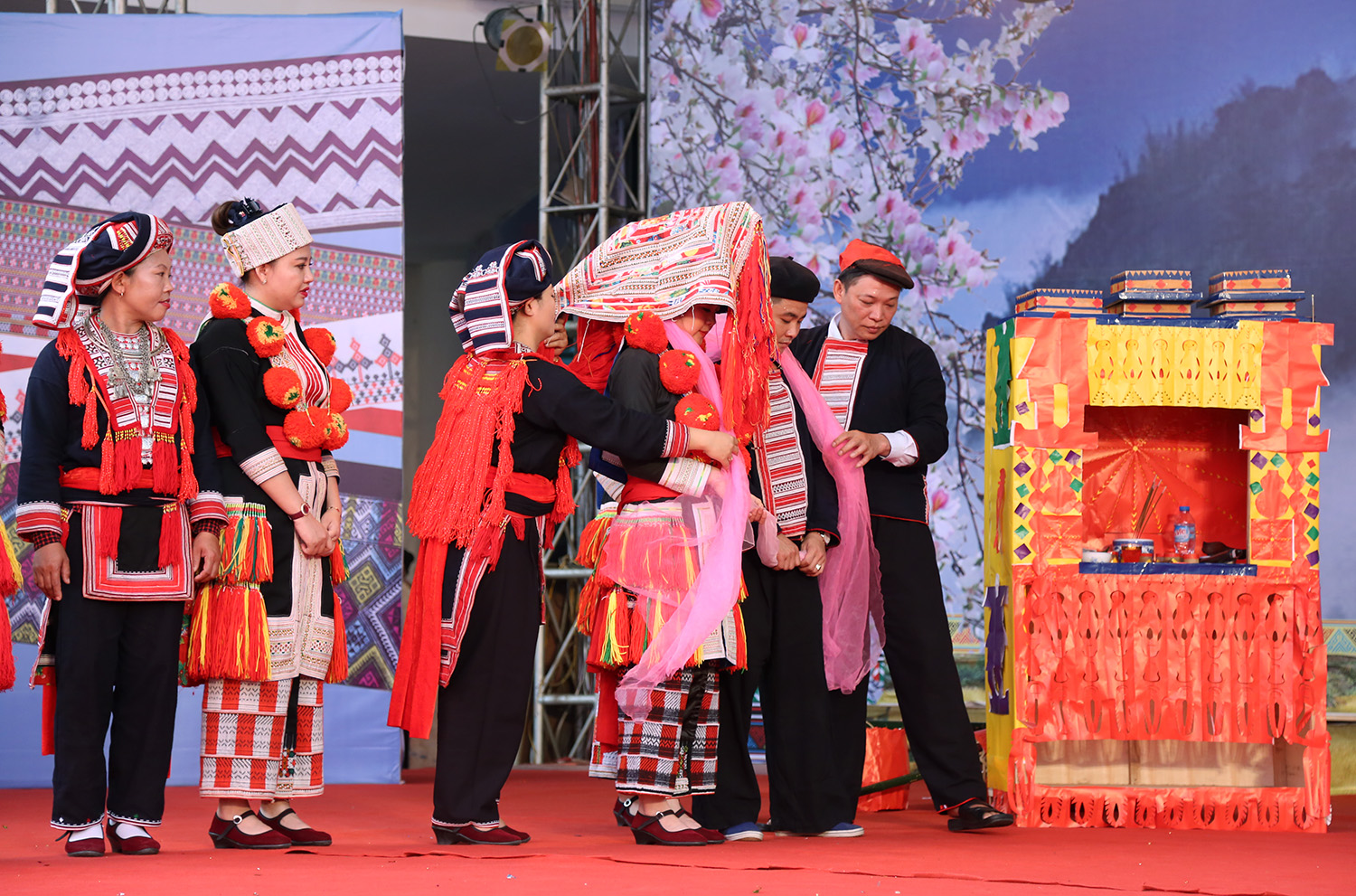
I find these to be the most interesting features of the H’mong and Red Dao people of Sapa, two of the predominant groups that you will encounter during your stay. I hope you will have a better understanding of their cultures and recognize even more little fascinating details upon interacting with them in real life. Until the next one: Tay, Giay, and Phu La people of Sapa.
Check out more about Sapa in these articles:
Traditional Clothing of the Ethnic Groups of Sapa
The Best Homestays in Sapa (For An Authentic & Personal Experience)
Discovering Sapa: A Comprehensive Guide to Visiting Vietnam’s Northern Hill Station
If you enjoyed reading this article and would like some more fun info about what to see, do and eat (and a bunch of interesting cafes!) in Vietnam, follow us at The 4U Trip!
